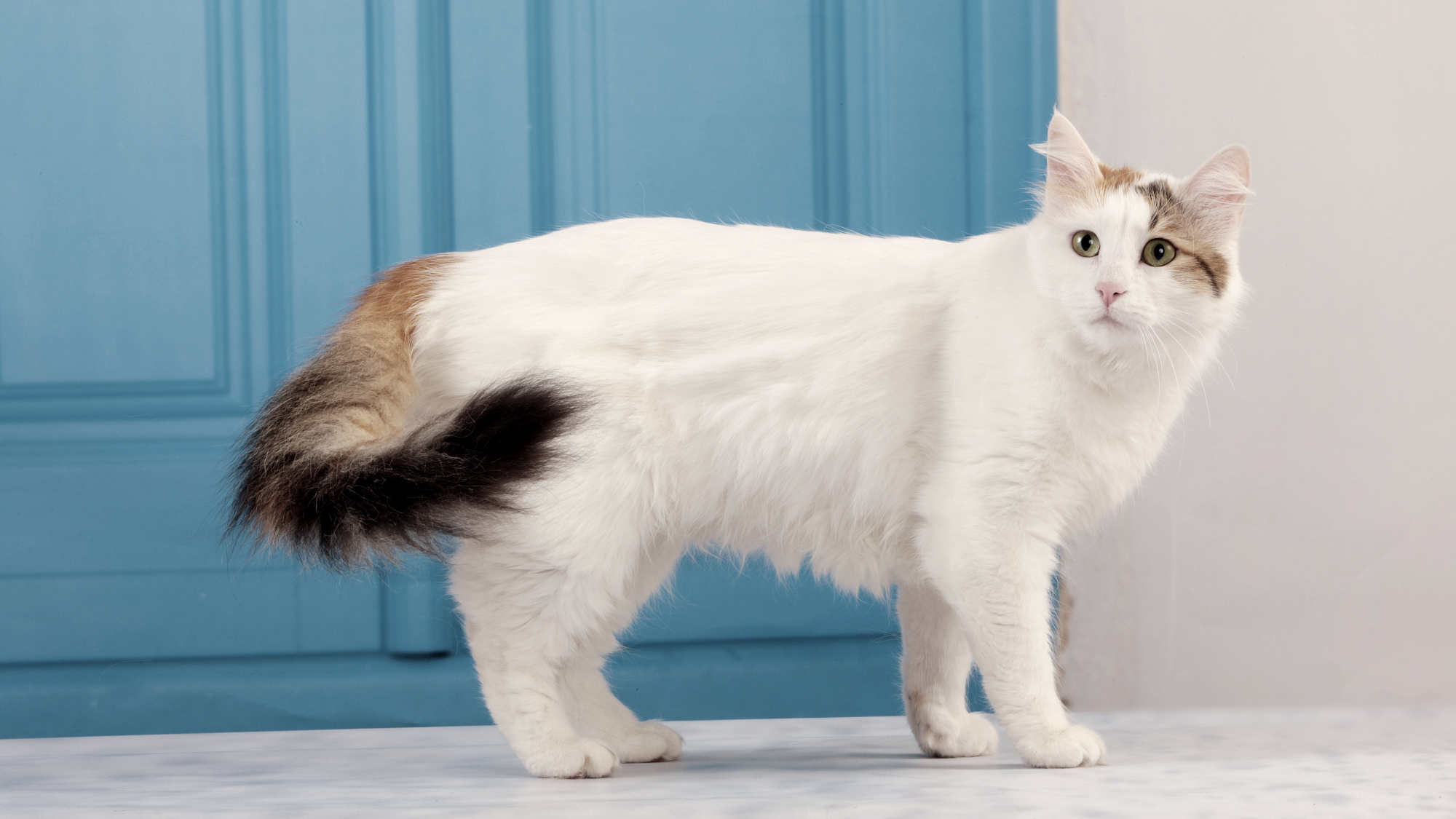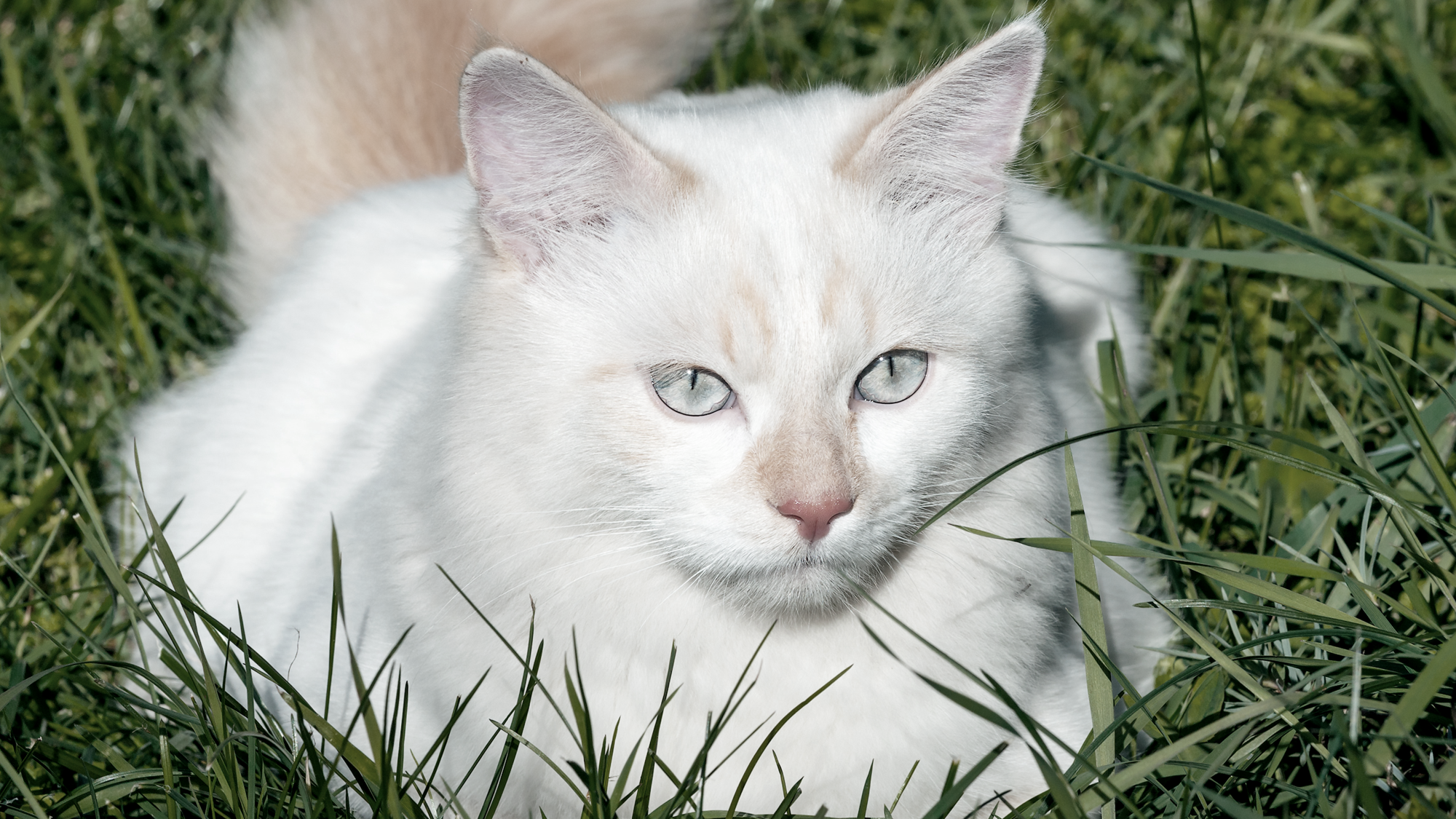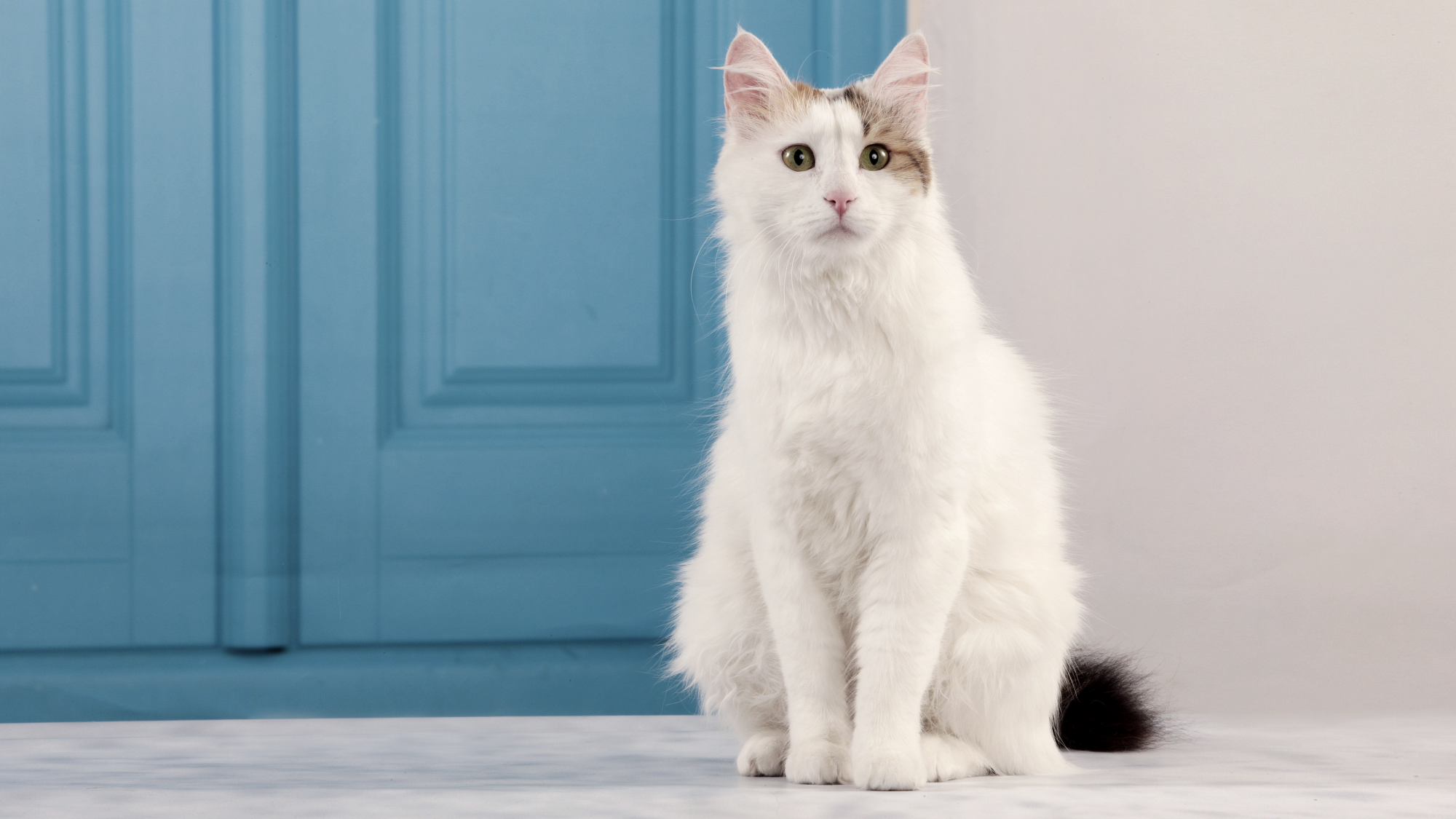
Let's talk Vankedisis
Snow white and silky soft Vankedisi cats are undeniably beautiful, but this breed has much more to offer besides their looks. Hailing from Turkey, these inquisitive and active cats make wonderful companions. Vankedisis (the separate, all-white version of the more famous Turkish Van breed) are playful and loyal—they sometimes form a strong attachment to one of their humans in particular. If you’re lucky enough to be chosen, you may find yourself followed everywhere by a fluffy white shadow.Official name: Vankedisi
Other names: Turkish Van White
Origins: Turkey

| Shedding level: |
|
Warm weather? | |
| Energy level (high, low, medium)*: | Medium | Family pet* |  |
| Compatibility with other pets: |  |
Companionship can prevent emotional distress and destructive behaviour. Speak to your veterinarian for recommendations.
Every pet is different, even within a breed; this snapshot of this breed’s specifics should be taken as an indication.
For a happy, healthy and well-behaved pet, we recommend educating and socialising your pet as well as covering their basic welfare, social and behavioural needs.
Pets should never be left unsupervised with a child.
Contact your breeder or veterinarian for further advice.


| Baby cat | Birth to 4 months |
| Growing kitten | 4 to 12 months |
| Adult | 1 to 7 years |
| Mature | 7 to 12 years |
| Senior | From 12 years |

1/7
Get to know the Vankedisi
All you need to know about the breed
The Vankedisi is white as snow, and that’s what sets this breed apart from the better known Turkish Van cat, which displays colour markings. The two have the same origins but are classed as distinct breeds. Confusingly, the Vankedisi is also sometimes known as the Turkish Van White.
The large and muscular Turkish Vankedisi’s chalky white, silky fur is certainly the breed’s most attention-grabbing feature (and one you’ll certainly notice if your home has dark-coloured furnishings or you favour black clothes!). During the winter, their coat should become longer and heavier and as they age their neck and chest ruffs should become thicker and more pronounced. They also have shell-like pink inner ears, noses and paw pads, striking blue or amber eyes and a full brushtail long enough to balance out the not-so-insignificant weight of their deep-chested bodies. That’s useful for cats who are at ease climbing and jumping. Not to mention swimming.
While Vankedisis’ athletic antics may keep them busy, they always have time for their humans: They’re not the cuddliest breed but these affectionate cats do form strong bonds, often with one human in particular, and sometimes demonstrate their loyalty by following them everywhere.

2/7
2 facts about Vankedisis
1. Aquatic cat
The Vankedisi cat’s claim to fame is an unusual one: These cats swim … voluntarily that is. It’s hard to imagine this being a useful skill for the modern-day domestic cat, but it’s impressive nonetheless. This appreciation of water may even extend to drinking from dripping taps or trying to join you in the bath. You have been warned.
2. Cat games
Vankedisis have the well-deserved reputation of being playful and inquisitive and your cat will definitely benefit from having interactive toys on hand to while away the time: Laser pointers, mice to chase and bat at or even puzzles specially designed for cats will get these curious cats moving and help fulfil their need for exercise as well as mental stimulation.
History of the breed
Snow-white Vankedisis (and their more colourful Turkish Van counterparts) are among the oldest natural breeds of cat, originating in Turkey, in the rugged Lake Van region in the east of the country. These beautiful felines have been known, and kept as domestic pets, for many centuries in their birthplace, which has over the years been home to many different groups. Armenian and Kurdish, as well as Turkish, populations have all claimed ownership of these eye-catching cats as a cultural symbol.
Turkish Vans first started to come to wider attention in the 1950s when a British couple brought home a pair from a holiday in Turkey. Vankedisis remain a fairly rare breed outside Turkey.

4/7
From head to tail
Physical characteristics of Vankedisis
1. Coat
Chalk-white semi long silky coat, fairly large feathered ears.
2. Eyes
Large oval eyes in blue, amber, sometimes one of each colour.
3. Body
Muscular, long body with deep chest.

5/7
Things to look out for
From specific breed traits to a general health overview, here are some interesting facts about your Vankedisi

6/7
Caring for your Vankedisi
Grooming, training and exercise tips
Vankedisi cats’ luxuriant long-haired coat is actually quite easy to maintain. Just a regular brush-through should keep them tangle-free as well as removing dead hair and helping prevent hairballs. While they don’t actually need to be bathed unless they get really dirty (and you’ll certainly notice against their whiter-than-white fur) this quirky breed may actually enjoy a soak in the tub. Like other breeds, Vankedisis need regular tooth brushing to maintain good oral hygiene (daily if possible) as well as frequent ear checks to ensure their ears stay clean and free from signs of infection. Vankedisis are an active breed and they thrive on games such as chasing a ball or a feather as well as climbing and jumping. Be sure to allow them plenty of opportunities to keep physically fit and mentally stimulated—they can even be trained to retrieve, if you have the patience. No wonder they’re also known to get on well with dogs.7/7
All about Vankedisis
Yes – these sociable cats are known to get on well with humans and other animals. While they’re not known for being cuddly, per se, they tend to form a close bond with one of their humans in particular, often shadowing them around.
The Vankedisi is a solid, muscular, long-bodied breed and males can weigh as much as 10kg (20 pounds) while females are usually smaller, usually weighing a maximum of 5kg (12 pounds).
translations.feature.breeds.otherbreeds
Read more on this topic

Should I adopt a cat or buy a kitten?

The cost of owning a cat

Should I choose a pure breed or mixed breed cat?

Your guide to adopting a cat

Your guide to buying a kitten
Sources
1 - Veterinary Centers of America https://vcahospitals.com/
2 - Royal Canin Cat Encyclopaedia. Ed 2010 and 2020
3 - Banfield Pet Hospital https://www.banfield.com/
4 - Royal Canin BHN Product Book


